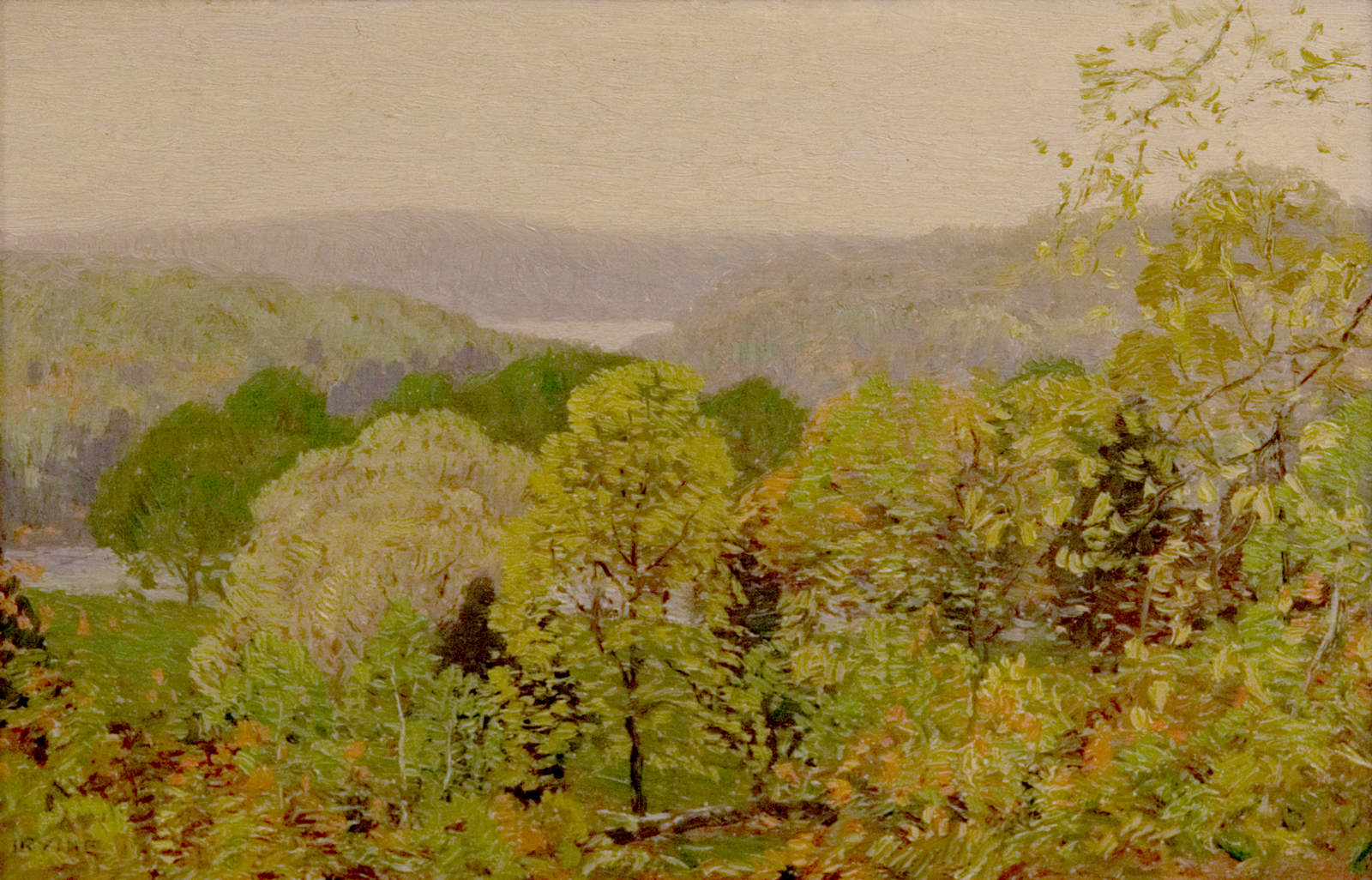Wilson Irvine
That Impressionist Wilson Irvine came to be known as a poet of light, his later “prismatic” works awash in the rainbowed glow of sun reflecting off of crystals, is impressive given the circumstances of his first few years of art lessons in Chicago, spent exclusively in the Art Institute’s evening life classes. Then again, Irvine wasn’t one to sit around hoping for something better. The influx of European Impressionist art that swept through the city in the form of the 1893 World’s Fair showed Irvine what he wanted to be doing with his art (at the time he was working as an airbrush artist with the Chicago Portrait Company), and he pursued that fine art career fastidiously.
In 1898, Irvine helped found Chicago’s Palette and Chisel Club, which hosted weekend classes during daylight hours, solving the issue of budding Impressionists lacking access to natural light in which to paint models. In 1900, he had his first piece exhibited with the Art Institute and was included in their annual shows almost every year to follow for the next 26 years. In 1908, he traveled abroad to France for the first time, instilling in him an eagerness for new sights that would occasionally lead him to purchase secondhand Fords on a whim to roam the English countryside, or board a ship alongside hundreds of sheep: every other human passenger had cancelled due to the inclement weather, but Irvine braved foul seas for a chance to see Scotland.
1914 marked the year Irvine started to detach himself from the Midwest in favor of Connecticut’s Old Lyme artist colony. There he befriended the Vonnohs, among other artists, and eventually took up permanent residence in the town. The rest of his life was marked by continued travel, experimentation, and a desire to paint whenever there was “a kind of hazy beauty in the air.”

